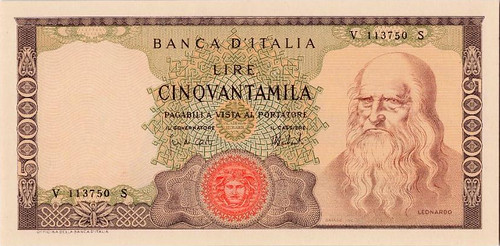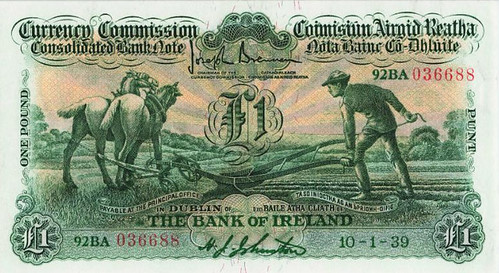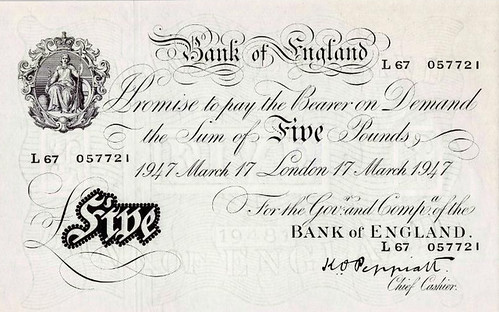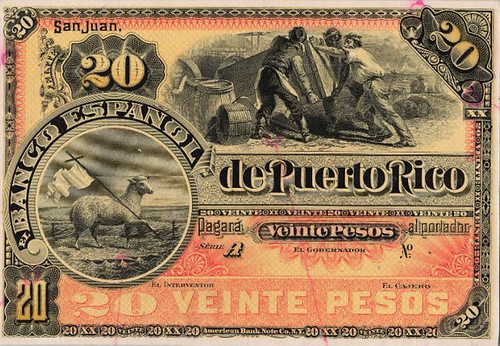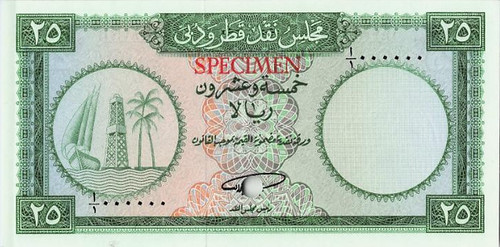
PREV ARTICLE
NEXT ARTICLE
FULL ISSUE
PREV FULL ISSUE
WBNA WORLD CURRENCY SALE 51Consignment Director Ryan Baum of World Banknote Auctions sent along these highlights and comments on their upcoming World Currency Sale 51. Thanks. -Editor We have had so much demand for European paper that we divided our current auction European Session to close a day ahead of the remaining notes. Within the European session I am partial to a 50,000 Lire note in amazing Gem 68 EPQ condition. Although note the highest denomination of the series, its image of Leonardo DeVinci has made this an iconic note.
Italy 4.2.1974 P-99c PMG Superb Gem UNC 68 EPQ 50,000 Lire A popular type from Italy with Leonardo DaVinci's image, which at the time of issue was the second highest denomination in circulation. It is scarce in higher grades, as putting one of these away required considerable investment at the time. This is an eye popping note in pristine condition that would serve as the perfect type representative for this issue.
To read the complete lot description, see:
Another interesting note is a Bank of Ireland 1 Pound from the Ploughman series issued after the island's division. This note shows only the slightest use of circulation and displays it featured design well.
Ireland - Eire, Bank of Ireland 10.1.1939 P-8b PMG About UNC 55 1 Pound From the ploughman series of Ireland, which allowed private banks such as this to continue issuing notes in Ireland after the division of the country (for a limited time). Always a popular series, this is a fresh and problem-free example just a touch below uncirculated and seldom seen in such grade. Strong color and originality can clearly be seen in the PMG holder, making this a perfect representative for the type.
To read the complete lot description, see:
I am amazed at how long the Bank of England kept its notes on plain white paper as if frozen in time from the 18th century. While the United States struggled with our updated designs at the close of the 20th century, this plain white 5 Pound note was issued after World War II when much of the rest of the world was already issuing brilliantly colored notes.
Great Britain 17.3.1947 P-343 PMG Superb Gem UNC 67 EPQ 5 Pounds Tied for finest in the PMG population report for this Pick number, and an excellent representative of this popular and long-running type. Only a few years later this design would finally be retired.
To read the complete lot description, see:
Within the "Rest of the World Segment," we have a rare Puerto Rican proof issued during Spain's control of the island and whose underlying issued notes remained valid for use well into the U.S. control following the 1898 Spanish American War.
Puerto Rico ND (ca.1889) P-10p1 PMG Choice UNC 64 20 Pesos (Front Proof) The Banco Espanol de Puerto Rico, or Spanish Bank of Puerto Rico was established by Royal decree in May of 1887, commencing operations on the island in February of 1890. The bank would be a prolific issuer of notes until the end of that decade, when the island became a United States territory. The notes remained valid for circulation until 1926, when they were finally withdrawn. This extensive circulation period no doubt contributed to the rarity of these notes in issued form, as except for the lowest denomination, issued notes from the Banco Espanol de Puerto Rico are extremely rare. Proofs and specimens, typically from the ABNC archives, are more available, but remain rare. This front Proof is particularly interesting as it has printer's annotations that display the location of secret marks added by the printer, perhaps as a way to identify counterfeits. Highly unusual and rare as such, with strong eye-appeal, and an important opportunity for the Spanish colonial or Puerto Rican specialist. PMG Mentions "Printer's Annotations".
To read the complete lot description, see:
We also are fortunate to have several color trial specimens on the early Qatar & Dubai issue. This short-lived series was intended to replace the Indian Rupee and Gulf Rupees in commerce when started in the 1960s.
Qatar & Dubai ND (ca. 1960s) P-4cts PMG Choice UNC 63 25 Riyals (Color Trial Specimen) A Color Trial Specimen of Qatar and Dubai's 25 Riyals note, the key denomination of the series, and a classic Middle Eastern banknote. Following the dissolution of the Ottoman Empire, Great Britain established various Protectorates in the Persian Gulf region. These political affiliations endured for decades until 1971, when the Emirates gained independence, ultimately forming the United Arab Emirates and issuing its inaugural banknotes in 1973. However, the earliest banknotes for what would become the UAE were introduced in Dubai in 1966, as it entered into a currency pact with Qatar. At that time, the circulating banknotes included Indian Rupees and Gulf Rupees, both printed in India. The currency amalgamation between Qatar and Dubai proved to be a triumph, with their banknotes circulating widely in both regions. This series encompassed denominations of 1 Riyal, 5 Riyals, 10 Riyals, 25 Riyals, 50 Riyals, and 100 Riyals, all produced by the British company Bradbury & Wilkinson. While all denominations featured the same design, they differed in color and increased in size with each denomination. The 25 Riyals note, vividly blue, measured approximately 140 x 70 millimeters. The front of the notes featured entirely Arabic text, including the serial numbers, while the back was in English, denoting the notes as issued by the Qatar & Dubai Currency Board. The final note was issued with a primary blue color and estimates indicate fewer than 1,600 notes remain outstanding. This Color Trial's primary color is green and affords a rare opportunity to acquire an early specimen of one of the Middle East's rarest notes. PMG mentions "Previously mounted".
To read the complete lot description, see:
Wayne Homren, Editor The Numismatic Bibliomania Society is a non-profit organization promoting numismatic literature. See our web site at coinbooks.org. To submit items for publication in The E-Sylum, write to the Editor at this address: whomren@gmail.com To subscribe go to: https://my.binhost.com/lists/listinfo/esylum All Rights Reserved. NBS Home Page Contact the NBS webmaster 
|
